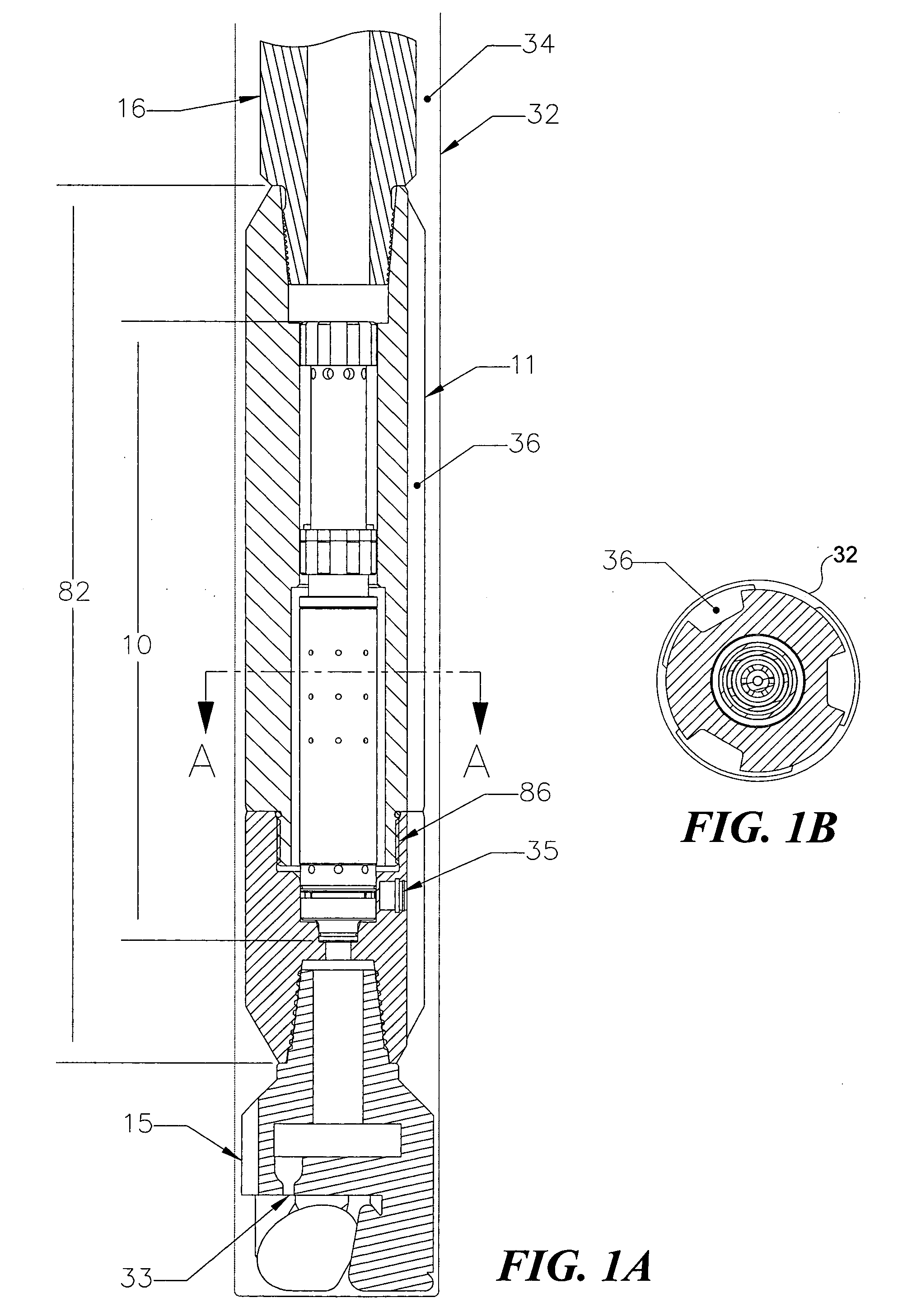Hydraulic impulse generator and frequency sweep mechanism for borehole applications
a technology of frequency sweep mechanism and impulse generator, which is applied in the direction of survey, instruments, borehole/well accessories, etc., can solve the problems of in-line configuration extremely complex, difficult to manufacture and assemble, and dynamic instability of the poppet valv
- Summary
- Abstract
- Description
- Claims
- Application Information
AI Technical Summary
Benefits of technology
Problems solved by technology
Method used
Image
Examples
Embodiment Construction
[0092] The present invention is both an improved hydraulic impulse generator and a frequency modulator that is usable with the hydraulic impulse generator to enable a broad range of frequencies to be generated during drilling, to achieve SWD with look ahead imaging. The text that follows first describes the improved hydraulic impulse generator and then describes the frequency modulator that can be used with the improved hydraulic impulse generator to achieve SWD. As noted above, an earlier design of a hydraulic impulse generator is described in commonly assigned U.S. Pat. No. 6;237,701, issued on May 29, 2001. The present invention corrects several problems with this earlier design, as discussed above under the Background of the Invention.
[0093]FIGS. 1A and 1B show the basic configuration of the improved hydraulic impulse generator, which is disposed at the bottom of a rotary drillstring 16. A hydraulic impulse generator 82 is part of a BHA of rotary drillstring 16, which is dispos...
PUM
 Login to View More
Login to View More Abstract
Description
Claims
Application Information
 Login to View More
Login to View More - R&D
- Intellectual Property
- Life Sciences
- Materials
- Tech Scout
- Unparalleled Data Quality
- Higher Quality Content
- 60% Fewer Hallucinations
Browse by: Latest US Patents, China's latest patents, Technical Efficacy Thesaurus, Application Domain, Technology Topic, Popular Technical Reports.
© 2025 PatSnap. All rights reserved.Legal|Privacy policy|Modern Slavery Act Transparency Statement|Sitemap|About US| Contact US: help@patsnap.com



